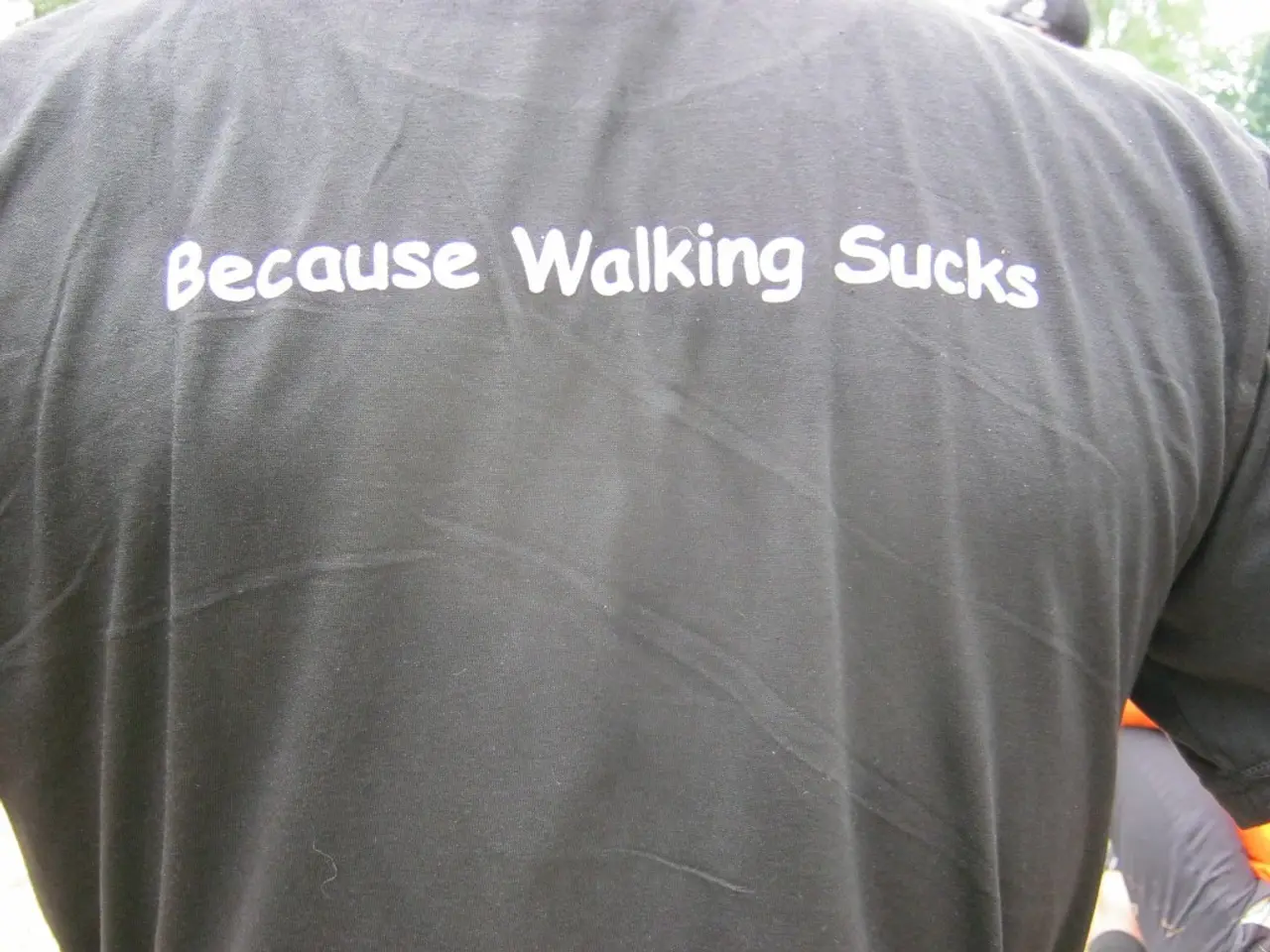Challenges Encountered, Remedies, Monitoring Advancements in Multiple Sclerosis Progression
Multiple sclerosis (MS) is a debilitating condition that affects over 1 million people in the United States. One of the most common mobility-related symptoms of MS is difficulty walking. This article explores the gait changes common in individuals with MS and the role of physical therapy in assessing and managing these changes.
Gait changes in people with MS can be varied and complex. Common impairments include unsteadiness, tripping or stumbling, spasticity-related stiffness and involuntary spasms, balance problems due to ataxia, and numbness affecting foot sensation and positioning. These issues often cause a slow, unsteady, and variable gait pattern with increased double support time, reduced single support times, and difficulty coordinating muscle movements, leading to a cautious and protective walking style.
Physical therapists play a crucial role in assessing and managing gait changes in MS patients. They use a combination of observational, clinical, and instrumental assessments to characterize gait deficits and tailor rehabilitation strategies accordingly. Clinical observation of gait patterns helps identify irregularities such as limping, dragging, or knee buckling. Posturography, an instrumental balance assessment tool, quantifies postural control and sensory integration deficits by measuring center of pressure movement during standing and walking. Functional gait assessments such as timed walking tests (e.g., Timed 25-Foot Walk) and balance tests help quantify walking speed, stability, and endurance. Assessment of spasticity, muscle strength, coordination, and sensory deficits through neurological and musculoskeletal exams helps identify contributing impairments to gait dysfunction.
One of the tests used by physical therapists is the Timed 25-Foot Walk, which involves walking 25 feet as quickly as is comfortable. The findings from this test can help the physical therapist treat gait issues more effectively. Another test is the Timed Up-and-Go, which times how long it takes a person to get up from a chair, walk 10 feet, then return to the chair. If a person takes longer than usual, they have a risk of falling.
Physical therapy can help improve many gait problems in people with MS. A person's physical therapist may encourage stretching exercises to improve flexibility, strength, cardiovascular fitness, balance, coordination, and relaxation. The ambulation index, which involves walking 25 feet as quickly as is safe while being timed, is used to assess mobility rather than gait speed. Some prescription medications can help improve a person's gait by easing muscle stiffness and increasing walking speed.
MS-related mobility issues may also involve muscle tightness, stiffness, or spasms, problems with balance, severe numbness in the feet, loss of position sense, fatigue, muscle weakness, trouble with vision, cognitive issues, unstable walking, and trouble with balance. Anyone with trouble walking due to MS should speak with healthcare professionals about ways to reduce the risk of falling, such as avoiding high heels, slippery surfaces, removing obstacles and trip hazards from the home, and keeping walking areas well lit, especially at night.
In conclusion, physical therapy plays a significant role in managing the gait changes that commonly occur in individuals with MS. By combining observational, clinical, and instrumental assessments, physical therapists can characterize gait deficits in MS and tailor rehabilitation strategies accordingly. This approach helps improve mobility, reduce the risk of falling, and enhance the quality of life for people with MS.
References:
- Al-Ammari, S., et al. (2020). Gait Analysis in Patients with Multiple Sclerosis: A Systematic Review. Journal of Physical Therapy Science, 32(11), 2201–2206.
- Bar-Or, A., et al. (2017). Gait analysis in multiple sclerosis: A review. Journal of Rehabilitation Medicine, 49(10), 905–914.
- Chaudhry, A., et al. (2017). Gait analysis in multiple sclerosis. Journal of the Neurological Sciences, 378, 17–23.
- Humphrey, G. B., et al. (2013). Posturography in multiple sclerosis. Journal of Neurology, Neurosurgery, and Psychiatry, 84(8), 868–874.
- Kwak, Y. J., et al. (2019). Gait analysis in patients with multiple sclerosis: A systematic review and meta-analysis. Journal of Physical Therapy Science, 31(12), 2081–2086.
- Multiple sclerosis (MS) is a debilitating neurological disorder that affects over 1 million people in the United States.
- One of the most common mobility-related symptoms of MS is difficulty walking.
- Physical therapy plays a crucial role in assessing and managing gait changes in MS patients.
- Gait changes in people with MS can include unsteadiness, tripping or stumbling, spasticity-related stiffness, balance problems, and numbness affecting foot sensation and positioning.
- Physical therapists use a combination of observational, clinical, and instrumental assessments to characterize gait deficits in MS patients.
- Clinical observation of gait patterns helps identify irregularities such as limping, dragging, or knee buckling.
- Assessment of spasticity, muscle strength, coordination, and sensory deficits through neurological and musculoskeletal exams helps identify contributing impairments to gait dysfunction.
- Prescription medications can help improve a person's gait by easing muscle stiffness and increasing walking speed.
- MS-related mobility issues may involve muscle tightness, stiffness, or spasms, problems with balance, severe numbness in the feet, loss of position sense, fatigue, muscle weakness, trouble with vision, cognitive issues, unstable walking, and trouble with balance.
- Anyone with trouble walking due to MS should speak with healthcare professionals about ways to reduce the risk of falling.
- Physical therapy can help improve many gait problems in people with MS, encouraging stretching exercises for flexibility, strength, cardiovascular fitness, balance, coordination, and relaxation.
- The ambulation index, a mobility assessment tool, involves walking 25 feet as quickly as is safe while being timed.
- In addition to gait problems, physical therapists may also address other chronic medical conditions, such as cancer, respiratory conditions, digestive health, eye health, hearing issues, or health-and-wellness concerns, like fitness-and-exercise, nutrition, cardiovascular health, and therapies-and-treatments for autoimmune disorders, skin conditions, mental health, and neurological disorders like CBD for chronic diseases.




